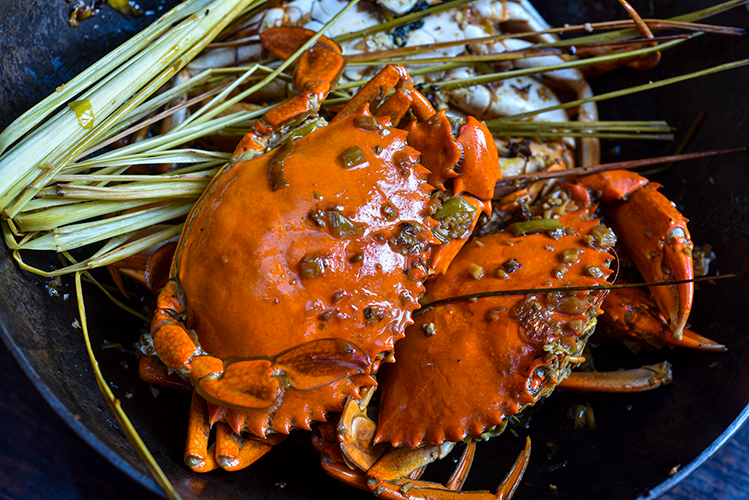
Defining “culinary capital”
Food defines the environment in which it evolves. Native ingredients and preparation techniques combine with foods and ideas from far reaches to create unique interpretations forever identified with specific locations. Some regional specialties and cooking processes become synonymous with those regions. Pampanga and its Kapampangan cooking have become world famous as the province hosting the best cooks in the nation, as a result of centuries of contact with the world. Today, food tourism to Pampanga has become well established, as “foodies” travel from afar to visit and taste the delicious attractions of the Culinary Capital of the Philippines.
The democratization power of social media has filled the internet with images of food. Posted, whether by famous bloggers, a feature writer of culinary traditions, a celebrity food critic, a family having dinner at a newly-opened Samyupsal restaurant, or a millennial bragging about what he had for breakfast, food and talking about it has created a sense of belongingness. In a 2017 report featured in Huffpost, entitled “An Obnoxious 69 Percent Of Millennials Take Photos Of Food Before Eating: If you didn’t ‘gram your food, did you even really eat it?,” a website research company claimed that 69% of millennials take photos of their food before eating. In Korea, a particular novel food practice, called Mukbang, has created significant online revenue for video content creators that show actual food eating in an interactive and real-time sequence where the audience can ask questions directly to the blogger while they are eating. As an economic commodity, consuming food has become a status symbol.
What exactly is “culinary capital?”
The naming of Pampanga as a culinary capital may be a recent identification. If we look at online sources of the pre-Facebook period of 2005, we hardly see any online articles that feature Pampanga owning the brand. If we find one, it’s self-imposed by Kapampangan writers. This self-imposition highlighting Pampanga in the culinary history map of the Philippines only began to appear when food practices and the food industry became online sensations. Online news networks started to capitalize on the trend by creating documentaries and stories featuring food. The proximity of Pampanga to Manila made it convenient for writers and journalists to quickly develop stories. Referrals to food destinations in the province were swift, since contacts were easy to establish since many Kapampangans worked in the TV networks. Formal branding as the “Culinary Capital of the Philippines” can be attributed to a report posted on Facebook by a Kapampangan artist, Josie Henson in a 1993 article promoting Angeles City as the “culinary capital of the Philippines,” idealizing a new image of the city, countering the impression of it only being a “Sin City” during the American Period. “The editor of this book, however, points out that the cooking identification was common even 50 years ago.”
In a book entitled Culinary Capital, published in 2013, the authors stated that specific food practices give people a sense of distinction within their communities. The concepts of food as an economic and cultural commodity, a demonstration of how a society’s food practices circulate and challenge prevailing values and ideologies, and an understanding of how these are all connected to the work of creating and sustaining a sense of self, all combine to create the organizing concept that constitutes the essence of a culinary capital.
A culinary capital is far more than just a destination. We often refer to Baguio City as the “Summer Capital of the Philippines,” whereas “Culinary Capital” describes the broader context of society’s dynamics, involving economic and commodities as well as geographic location.
A culinary capital is more inclusive of a society’s or a community’s assets of food and environmental resources that make its food practices not purely unique, but inclusive of historic contributions from other regions and places.

Nuances of cooking in Pampanga
As I travelled around the different towns in the Kapampangan region, I came to realize that the methods of cooking a particular dish varied significantly, depending on the recipe inherited from the ancestors of the one who cooked it, or by the influence of other regions that had fused into Kapampangan sensibilities-forming a hybrid version of the dish. When I posted the recipe of my adobu (I read an e-book on cooking that claimed adobu was a simple type of curry), a lot of people messaged me on Facebook that their versions of adobu were quite different from what they read in my article. Malou, from Santa Rita Pampanga, even said that according to her grandfather, the real Kapampangan adobu is the one that has no soy sauce, with the main ingredients solely based on vinegar and black pepper. Adobung Malangi is what she called it. Another cook, from Candaba, said that my type of adobu, which has a mixture of soy sauce, vinegar, and a laurel leaf, comes close to their jumba, another type of a dish made with a pig’s toe boiled and dried, with a sweet taste. The only difference, she said, was that my adobu did not include a little sugar to caramelize the whole dish.
Now to consider the widely popular signature Kapampangan dish, sisig, I grew up helping my Indu prepare this famous dish. She boiled the pig’s head and ears, eliminating the hair and other residue. The next step was to chop the pig parts into tiny bits, then soaking it in a sizeable sartin bowl of aslam sasa (palm vinegar), which I used to buy in Tinajero, Bacolor. She would not let any other type of vinegar spoil the taste of the sisig. Only aslam sasa keng Tinajero would do. That was before the eruption of Mt. Pinatubo. Seasoned with hard-core onions and pepper, she would then let the sisig marinate for more than an hour before serving. We call this sisig mabuktut.

Today, sisig has many versions. Kapampangan advocates are adamant in not letting a cultural icon be deconstructed, as they think it destroys the concept. As Mike Pangilinan, a cultural historian, said, “For we Kapampángans, cooking is not a mere hobby or a pass time. It is an essential part of our identity. It is an expression of who we are as people. It is our soul. Therefore, we get hurt and angry whenever somebody steals our soul and identity and calls it simply Filipino food rather than a Kapampangan dish. Worse is when you twist it and play around with it to the point that we can no longer recognize ourselves in it.”
When we speak about change, we should talk about enrichment for the better.
The Kapampangan revolt against putting egg on top of sisig extends beyond criticism. It spreads to the floor of discourse that defends the socio-cultural position of the dish in their ways of life, identity and integrity. Evolution is always acceptable if changes maintain the context of the food. But putting an egg in an already perfect recipe is seen as an outright bastardization of the Kapampangan ethos. It is an insult to a process that has its genesis in a direct transfer of legacy from their ancestors.
The novel idea of egg on sisig only functions as a visual appeal and has nothing to do with its hundred-year-old heritage.

Doreen Gamboa Fernandez, a highly-acclaimed food historian, cited in her book, cuisine is supposed to be enriched, rather than bastardized; its integrity kept; its dynamism that of judicious response to change. She said that it’s not really about indigenization but the process of how it becomes indigenized.
Acceptable is the idea that food should be enjoyed by the one who consumes it, according to how one prepares it. When people consider food as a source of status, reflecting cultural and economic values, this power relation can stay intact, if those values are respected. It is through these dynamics that food evolves into perfection. The evolving perfection of Kapampangan food continues to ensure its designation of Culinary Capital of the Philippines. END.
NOTE: This article is taken from the soon-to-be-launched Kapampangan cook book entitled Pupul: Grassroots Kapampangan Cooking published by the Pampangan Medical Society. The book is written with photography by Ruston Banal.
- Gimblett, Barbara Kirshenblatt, Fernandez, Doreen G. “Culture Ingested: On the Indigenization of Philippines Food”. Tribute. https://www.nyu.edu/classes/bkg/web/fernandez.pdf. Accessed in January 30, 2020. This article presents a wonderful overview of the evolution of Philippino cooking and even includes a useful glossary of food and cooking terms.
- Amatulli, Jenna. “An Obnoxious 69 Percent Of Millennials Take Photos Of Food Before Eating: If you didn’t ‘gram your food, did you even really eat it?”. www.huffpost.com. Huffington Post. March 01, 2017. Accessed on January 30, 2020. Amatulli, Jenna. “An Obnoxious 69 Percent Of Millennials Take
- https://en.wikipedia.org/wiki/Mukbang
- Henson, Josie D. “The Role of Angeles in Philippine History”. Fiestang Kuliat Souvenir Program.1993
- Naccarato, Peter and Lebesco, Kathleen. Culinary Capital. Bloomsbury Academic. 2013.
- Banal, Ruston. “Where did this gastronomic sizzler come from?”. GMA News Online. September, 2014. https://www.gmanetwork.com/news/lifestyle/food/381328/sisig-where-did-this-gastronomic-sizzler-come-from/story/
- Banal, Ruston. “Sisig with egg and mayo? Thanks, but Kapampangans aren’t having any of that”. GMA News Online. April, 2018. https://www.gmanetwork.com/news/lifestyle/food/651699/sisig-with-egg-and-mayo-thanks-but-kapampangans-aren-t-having-any-of-that/story/
- Fernandez, Doreen, Gamboa. Tikim: Essays on Philippine Food and Culture. Pasig, Metro Manila, Philippines: Anvil Publishing, 1994.






2 responses to “A Book That Explains Why Kapampangans Can Cook Well”
Kapampangan desserts next chapter !!!
Like!! Really appreciate you sharing this blog post.Really thank you! Keep writing.